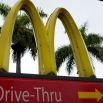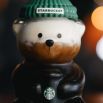US Division of Coca-cola and Pepsi companies are both vying for investment in Greek yoghurt producer Chobani.
Australian Food News reported that any investment deal could value Chobani at US$3 billion. Reuters said the yoghurt producer is after an investor which can help grow the brand internationally and aid in the expansion of its supply chain, distribution and manufacturing. The company will reportedly hand over 10 to 20 percent share of the company in exchange.
Reuters pointed out that both Coca-cola and Pepsi have experience within the dairy industry. The US arm of Pepsi seels Muller yoghurt with German company Theo Muller while Coca-cola currently sells FairLife milk beverages in the US through a joint partnership.
It has been speculated that the companies are looking to take advantage of the fast-growing health food market. However, Coca-cola and Pepsi have both not yet commented on the investment bid to Chobani up to this writing.
Meanwhile, Chobani had its start in 2005 when founder and CEO Hamdi Ulukaya brought a formerly Kraft-owned yoghurt plant. The product was first launched into Australia supermarkets in year 2011.
A number of varieties and flavors are now sold throughout Australian supermarkets. Moreover, products are also marketed as being gluten-free, low in fat. It has two times more protein per serving than regular yoghurt.
Meanwhile, Food World News previously reported that Coca Cola South Pacific have announced that Powerade will be going through its biggest reformulation. "In the booming sports drink category what has become apparent is that innovation and exclusive partnerships are driving transactions," Coca-Cola Pacific's Group Marketing Manager Tracey Evans said.
Roy Morgan Research revealed that Powerade is Australia's most consumed sports drink. "Powering ahead of the pack is Powerade, drunk by well over half (58%) of sports drink consumers in an average seven days," the report read. "Long-time rival Gatorade is chosen by 33% of people who drink these beverages, while Australasian brand Maximus is a distant third (7%). Of course, these figures are not cut and dried, a certain portion of each brand's consumers drink at least one other brand during the same time period."
© copyright 2024 Food World News, a property of HNGN Inc. All rights reserved. Use of this website constitutes acceptance of our terms and conditions of use and privacy policy.









